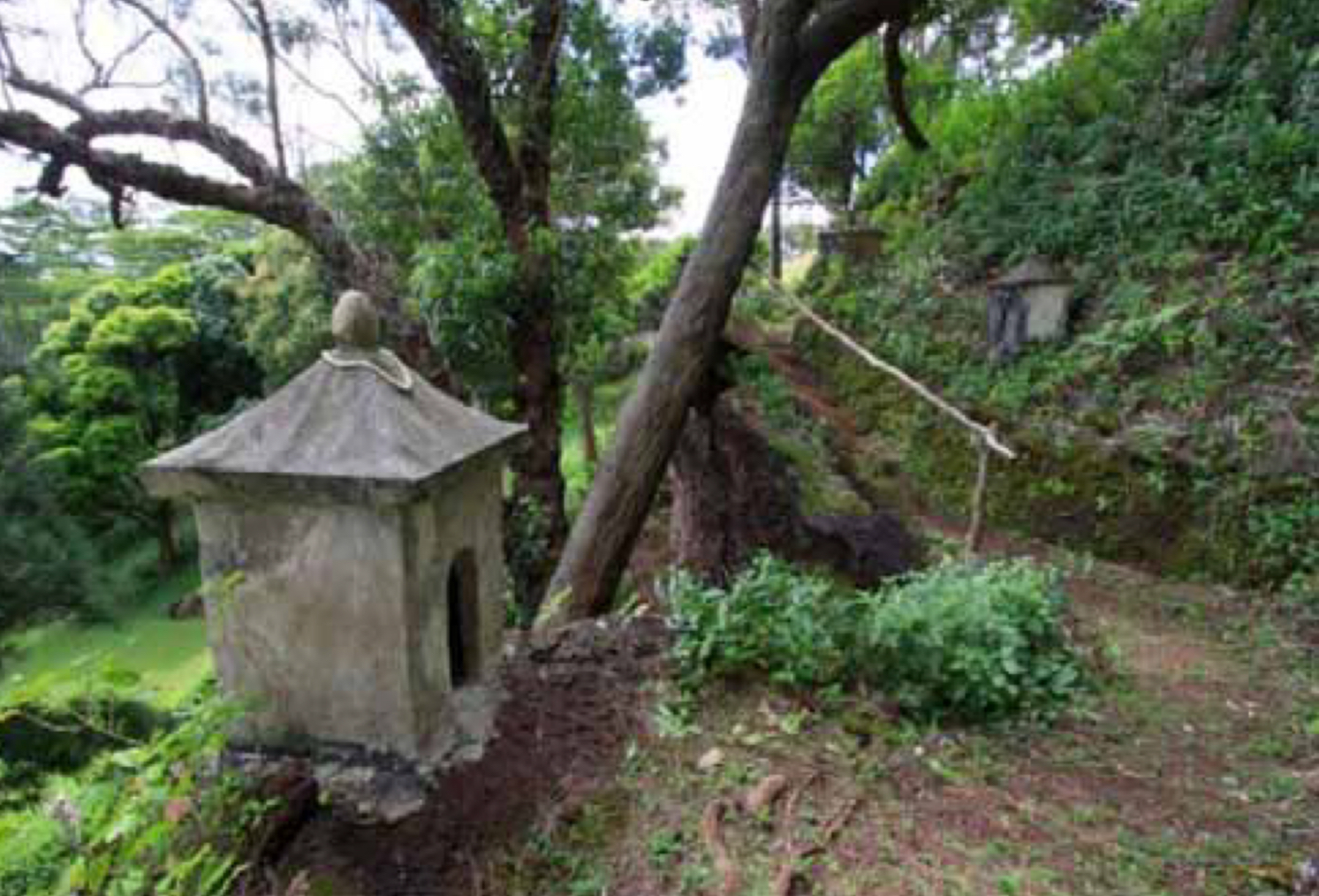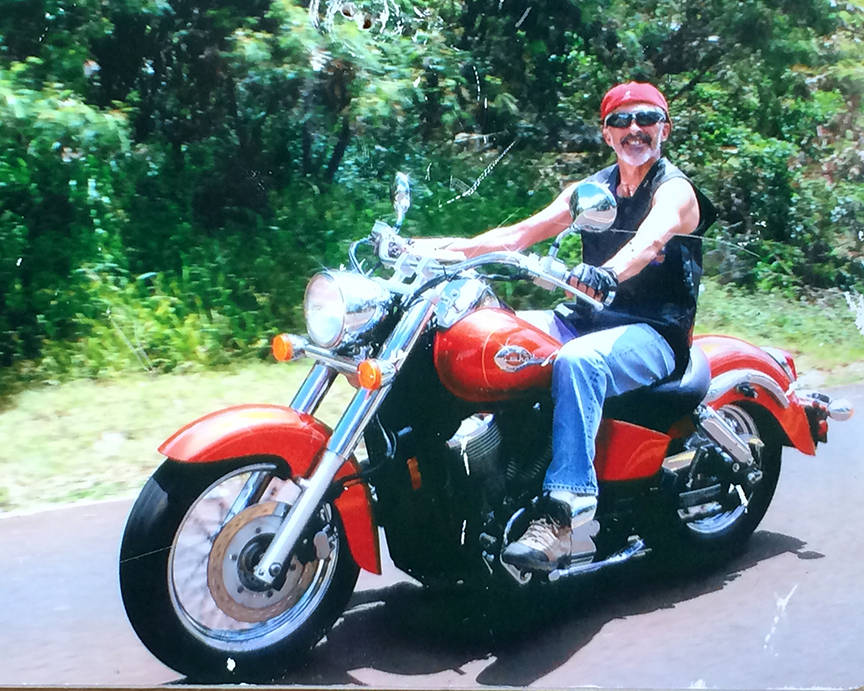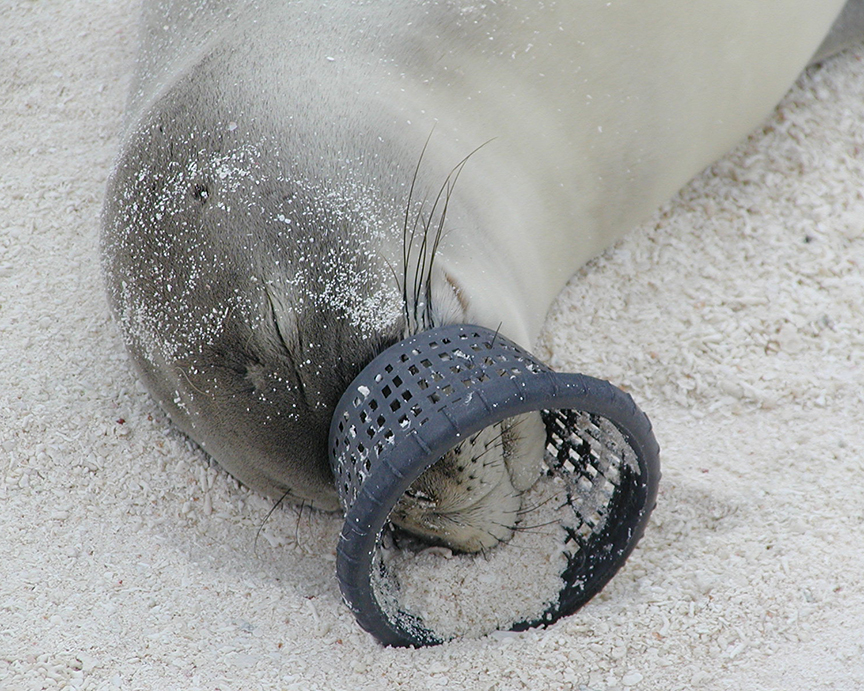By Léo Azambuja

Kaua‘i Museum Executive Director Chucky Boy Chock is seen here with a painting of Chiefess Kamakahelei, in exhibit at the museum. The painting was done by Evelyn Ritter, who has portrayed several chiefs and royalty also in exhibit at Kaua‘i Museum in Lihu‘e.
Chiefess Kamakahelei ruled over Kaua‘i and Ni‘ihau when power-thirsty chiefs waged war against each other throughout the Hawaiian Islands. Though warfare may have been the business of men, Kamakahelei was arguably one of the most important chiefs in Hawai‘i during her time as ali‘i nui of Kaua‘i.
“She was powerful; her lineage was very important,” said Chucky Boy Chock, executive director of Kaua‘i Museum.
Kamakahelei was born in the mid 1750s. She was the great-granddaughter of Kuali‘i, once the ruling ali‘i of Kaua‘i, O‘ahu, Molokai, Lāna‘i and Maui. Kuali‘i’s son, Pelei‘ōhōlani, ruled Kaua‘i, reporting only to his father. When Kuali‘i died at an old age, control of O‘ahu passed to his oldest son, Kapi‘oho‘okālani, according to Frederick B. Wichman, in his book, Nā Pua Aliʻi o Kauaʻi: Ruling Chiefs of Kauaʻi.
But Kapi‘oho‘okālani would die in a fierce, five-day battle on Molokai soon after taking control of O‘ahu. Though Kapi‘oho‘okālani’s son succeeded him, Pelei‘ōhōlani would eventually move to O‘ahu to rule the island, leaving behind his daugther, Ka‘apuwai, as the governor of Kaua‘i.
Ka‘apuwai married Kaua‘i chief Ka‘umeheiwā. Both were direct descendants of high chief Kalanikukuma, so their daughter, Kamakahelei, inherited a strong mana, or divine power. In old Hawai‘i, by marrying close relatives, even siblings, royalty would increase their offsprings’ mana and keep their lineage pure.
“She was a very powerful woman because her mother came from a powerful family, and so did her father, so that elevated her to an even higher status (than her parents),” said former Kaua‘i Mayor Maryanne Kusaka, who researched Kamakahelei’s life a few years ago as a Kaua‘i Historical Society board member.

Kamakahelei Cape, in exhibit at Bishop Museum. The yellow and black cape may have belonged to Queen Kamakahelei, or perhaps was named in her honor as a memorial to Queen Kapi‘olani’s, who was Kamakahelei’s great-granddaughter.
When Ka‘apuwai died, Kamakahelei became the ruler of Kaua‘i.
“For a time, Kamakahelei lived as her ancestors had. She was the ali‘i wahine nui of Kaua‘i but fully aware that she owed allegiance to her grandfather Pelei‘ōhōlani,” Wichman wrote, adding her choice of husbands embroiled her in warfare, “whether that was her intetion or not.”
Kamakahelei married an ali‘i named Kiha, and together they had three children: a son named Keawe and two daughters, Lelemāhoelani and Kaluaipihana.
Pelei‘ōhōlani, still the ruler of O‘ahu, sent his grandson, Kaneoneo, to Kaua‘i to ensure the island would remain loyal to him, according to Wichman. Kamakahelei would leave Kiha to marry Kaneoneo, her first cousin. Kiha settled on Ni‘ihau, and with a group of loyal warriors, he kept leading raids against Kaneoneo’s men on Kaua‘i’s South Shore. In one of those raids, Kiha was killed.
Kamakahelei and Kaneoneo had a daughter named Kapuaamoku. Sometime in or before 1777, Kaneoneo’s father, in his 70s, called him to return to O‘ahu to help stem the ambitions of a Maui high chief who wanted to rule the entire archipelago, according to Wichman. At that time, Kahekili had taken control of Maui after several battles against Pelei‘ōhōlani’s warriors. Kahekili was the son of Kekaulike, former ali‘i nui of Maui. With half his body tattooed in black, Kahekili instilled fear on his enemies. He was known for skills in war, statecraft and oratory, but also for his cruelty to his enemies.
When Kahekili realized Kamakahelei was alone on Kaua‘i, he sent his younger brother, Kaʻeokūlani, to Kaua‘i to woo her. It worked; Kamakahelei took Kaʻeokūlani, nine years younger than her, as her husband. She didn’t expect to have more children, so she named Keawe as the heir to the kingdom, Wichman wrote.

Chiefess Kamakahelei statue, by Karen Lucas, fronting Chiefess Kamakahelei Middle School in Puhi.
By the end of 1777, Kalaniʻōpu‘u was the sole ruler of Big Island. Kahekili had conquered Maui, Molokai and Lana‘i. Pelei‘ōhōlani, an old man, had given the rule of O‘ahu to Kaneoneo. Kamakahelei ruled Kaua‘i and Ni‘ihau. Also at at that time, a young ali‘i born in Kohala, Big Island, was in his late teens or early 20s, and already had many battle scars. He was Kalaniʻōpu‘u’s nephew, and his name was Kamehameha.
On Jan. 19, 1778, Capt. James Cook saw the Hawaiian Islands for the first time. The next morning, the HMS Resolution and the HMS Discovery set anchor in waters off Waimea, Kaua‘i’s Westside. Kamakahelei sent three men onboard the HMS Resolution — a kahuna named Kū‘ohu and two chiefs named Kiʻikīkī and Kāneakahoʻowaha. They returned with an iron dagger presented to Kū‘ohu as a gift.
By some accounts, Kamakahelei is said to have offered her oldest daugther, Lelemāhoelani, to spend the night with Cook, and she left in the morning ladden with gifts. But according to other accounts, this never happened.
In 1780, Kamakahelei gave birth to Kaumuali‘i. The boy was a direct descendant of Kalanikukuma and a great-great-grandson of Kuali‘i. He was a great-grandson of Pelei‘ōhōlani and Kekaulike, and the son of Kaʻeokūlani. His uncle was the dreadful Kahekili. Kaumuali‘i’s ancestry made him a powerful chief, Chock said.
“His lineage was stronger than Kamehameha, the Great,” Chock said of Kaumuali‘i. “And they both knew that.”
With Kaʻeokūlani, Kamakahelei also had two daughters; Kapiolani (born in 1783) and Kaininoa (born in 1785).
In 1785, Kaneoneo was killed by Kahekili’s army in a battle on O‘ahu. It is believed his body was roasted in an oven, as was the fate of many chiefs killed by Kahekili.
Sometime before in or before 1791, Kaʻeokūlani returned to Maui, summoned by Kahekili. Upon his father’s departure, Kaumuali‘i was named the rightful heir to Kaua‘i, bypassing his older brother Kewae as the heir. But because Kaumuali‘i was still a child, a chief named Inamo‘o was placed as a regent to govern Kaua‘i, according to Wichman.

Portrait of Kamakahelei, by Evelyn Ritter, on display at Kaua‘i Museum.
Kahekili died in the fall of 1793, and Kaʻeokūlani took control of Maui, Molokai and Lana‘i. Kahekili’s son, Kalanikūpule, ruled Oʻahu.
Kamakahelei is believed to have died in mid-1794. Not much is written about the circumstances of her death.
Later that year, Kaʻeokūlani, still on Maui, became homesick of Kauaʻi, and decided to come back. When he stopped on O‘ahu, he was attacked by Kalanikūpule, who thought his uncle was there to invade the island. The initial battle was called off after the misunderstanding was clarified. But Kaʻeokūlani found out his trusted advisors Kiʻikīkī and Kai‘awa plotted to throw him overboard in mid-ocean. So instead of leaving to Kaua‘i, Kaʻeokūlani decided to attack Kalanikūpule, and died fighting on Dec. 12, 1794. Kalanikūpule then executed several of Kaʻeokūlani’s chiefs and wives, sparing only the two traitors, Kiʻikīkī and Kai‘awa, according to Wichman.
On Kaua‘i, Inamo‘o also died in 1794, and Kaumuali‘i, free of his grip, was to rule the island. But he was captured by Keawe, who proclaimed himself ali‘i nui of Kaua‘i. Keawe sided with Kiʻikīkī, unaware he had betrayed Kaʻeokūlani. While going around the island on a tour to meet his people, Keawe was shot dead in Kapaʻa by Kiʻikīkī, who kept possession of Western guns. Kiʻikīkī’s brother, Kāneʻeku, tried to persuade him to shoot and kill Kaumualiʻi as well, but he decided he would rather keep the chief alive and control him.
“Kaumualil‘i, now freed from Inamo‘o’s regency and from captivity from his brother Keawe, was acclaimed ali‘i nui of Kaua‘i,” Wichman wrote.
Meanwhile, Kiʻikīkī was still at large and in possession of guns. Knowing well he was a threat, the king convinced Nākaikuaʻana, one the traitor’s friends, to steal his guns while he surfed in Makaweli. Powerless without his weapons, Kiʻikīkī and his brother fled to O‘ahu, and were followed and killed by Nākaikuaʻana.

Mahiole of King Kaumuali‘i, by William T. Brigham (1899), in exhibit at Bishop Museum
It was 1796, and at 16 years old, Kaumuali‘i would finally rule Kaua‘i.
But it was hardly a sigh of relief. Nākaikuaʻana returned from O‘ahu with the news that Kamehameha — now ruler of the Big Island, Maui, Molokai, Lāna‘i and O‘ahu — was getting ready to invade Kaua‘i. In the spring of 1796, Kamehameha sailed with a large army to Kaua‘i. However, a powerful storm sank many canoes in mid-channel, and the surviving warriors returned to O‘ahu.
A rebellion on the Big Island forced Kamehameha to temporarily abandon his plans to conquer Kaua‘i. But by 1804, he had put together the largest warring fleet ever in Hawai‘i, with several large peleleu — long, double-hulled canoes fitted with Western sails and guns — and many smaller schooners. To Kaua‘i’s luck, a Western disease (either typhoid, disentery, bubonic plague or smallpox) swept through O‘ahu, killing many of Kamehameha’s warriors. Kamehameha himself got sick, but survived.
“After the pestilence a single thought occupied the mind of Kamehameha and that of all the people, that was the adding of Kaua‘i-of-Mano to the kingdom. Kaua‘i was noted for the religious character if its people, hence the name “Kaua‘i of strong prayers” (Kaua‘ipule‘o). Kalaunuiohua, the ambitious chief of Hawai‘i who had attempted to seize Kaua‘i, was routed in battle outside Ka‘ie‘iewaho and taken prisoner to Kaua‘i by Kukona. Kamehameha had heard these old stories and about the powerful prayer called ‘Ane‘ekapuahi belonging to Kamakahelei, mother of Kaumuali‘i,” the late historian Samuel M. Kamakau wrote in his book, The Ruling Chiefs of Hawai‘i.
Kamakahelei supposedly used the ‘ane‘ekapuahi prayer frequently. It was considered a powerful prayer used to pray people to death, usually by burning. Even after her own death, Kamakahelei continued to protect her people, as her prayer still haunted those who intended harm on Kaua‘i.
Kamehameha never again sent troops to Kaua‘i. In 1810, he met with Kaumuali‘i, who agreed to serve as a vassal king to Kamehameha, thus avoiding war.
Discover more from ForKauaiOnline
Subscribe to get the latest posts sent to your email.





Leave a Reply